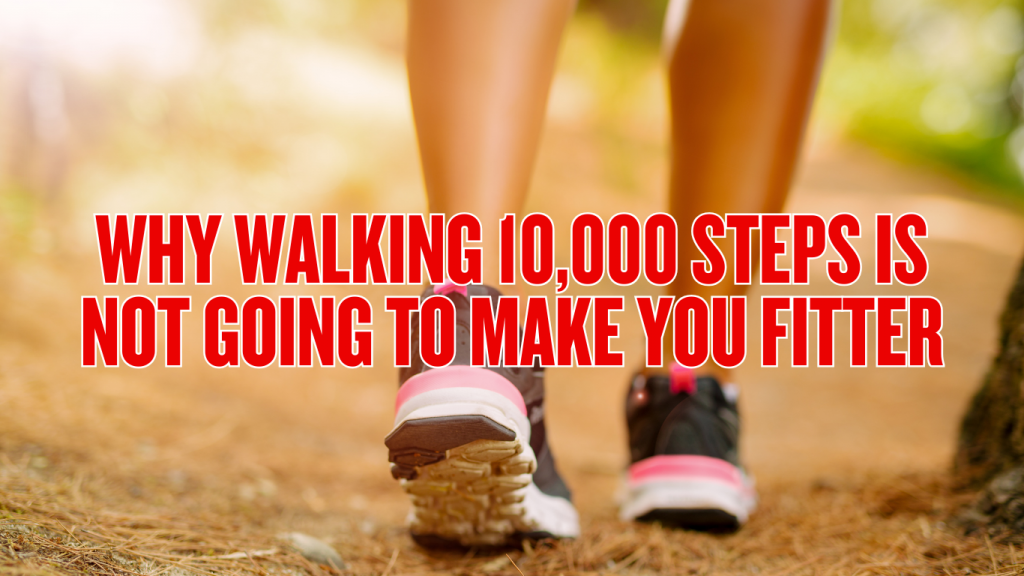
The importance of mobility is paramount, or at least that’s what fitness experts believe. However, the focus on mobility and moving isn’t a new concept. It’s been around since 1965, the year that a Japanese firm introduced the pedometer and spread the notion that taking 10,000 strides a day will improve your health. The firm was Yamasa Clock and Instrument Company, and its pedometer was referred to as Manpo-kei, which means “10,000 steps meter” in Japanese.
Study of Expert:
According a study, daily step count conducted by experts of Harvard Medical School surmised that this is where the magical figure of 10,000 steps originates from. In a different study published in Lancet this month, researchers wrote, “Although 10,000 steps per day are widely promoted to have health benefits, there is little evidence to support this recommendation.”
The study published in Lancet Researchers studied 15 studies covering the fitness and health of more than 47,000 people over seven years. While “10,000 steps” is a legend, the study found that there are health benefits for people who take more steps. People who exercised more had an average of 40 to 53 percent lower chance of dying. The researchers also discovered that walking more miles daily was connected with a decreasing mortality rate from all causes; however, the risk of mortality varied by age. The risk of mortality was lower of death among people with a 60-year or older who walked between 6,000-8,000 steps daily and those younger than 60 who averaged 8,000 to 10,000 steps per day.
Moderate to vigorous exercise dramatically enhances your fitness compared with less strenuous activities.
Ten thousand steps are still excellent, but it doesn’t increase your fitness levels.
Moderate-intensity exercise can be found in many forms, including running at high speed or driving a lawnmower.
Anybody who has switched their gym routine from before the outbreak by walking hasn’t come even close to receiving the same boost in fitness that they used to get.
A new study suggests that the 10,000-step target will not increase people’s fitness levels as they were before. Walking is excellent, but it’s not as effective as vigorous to moderate exercise, as per the study.

Why isn’t walking enough?
A new study was conducted at the Boston University School of Medicine. Boston University School of Medicine discovered that moderate or vigorous exercise durations that involved exercising at more intensity increased fitness. This was in contrast to less intense exercises, such as walking during the day.
Researchers found that for every minute of vigorous or moderately vigorous exercise, you would need at least three minutes of moderate cadence walking and over 14 minutes less time sedentary to reach the same cardiovascular fitness.
Matthew Naylor, assistant professor at the Boston University School of Medicine, stated that 10,000 steps had been linked to higher fitness levels. So, keeping track of your efforts is still an effective exercise method.
Because you could work for up to eight hours per working at a desk taking small breaks to stand and walk is beneficial for your mental and physical well-being. A recent study has found that regular intervals of sitting may improve blood sugar levels in the fasting period and even stabilize the fluctuation of blood sugar levels throughout the day.
The Centers for Disease Control and Prevention recommends that everyone take a minimum of 150 minutes of physical exercise every week. It’s a lot, but it doesn’t have to be spread out over long intervals. The activities can be broken down into smaller sessions and divided into various forms of exercise.
Moderately intense physical activity can take many ways, including running fast in the water, cycling an exercise bike on level ground and playing doubles tennis or even pushing a lawnmower.
The purpose of vigorous aerobic exercise is to cause your heart rate to increase, meaning you’ll be breathing more quickly and harder. This includes:
- Running or jogging
- Swimming laps
- Bicycling fast riding on steep hills
- Tennis singles in singles
- Basketball
Conclusion: So, This study was released in the European Heart Journal. The study, published in the European Heart Journal, comes just as many Americans are trying to find the ideal level of physical activity in the COVID-19 pandemic. While gyms and other fitness centres opening the last few years, a study has revealed that over half of Americans claimed that they would not go back to their fitness centres in 2021. In addition, some have adopted new ways of exercise such as at-home yoga, peloton bicycles, running, and walking around the neighbourhood.
